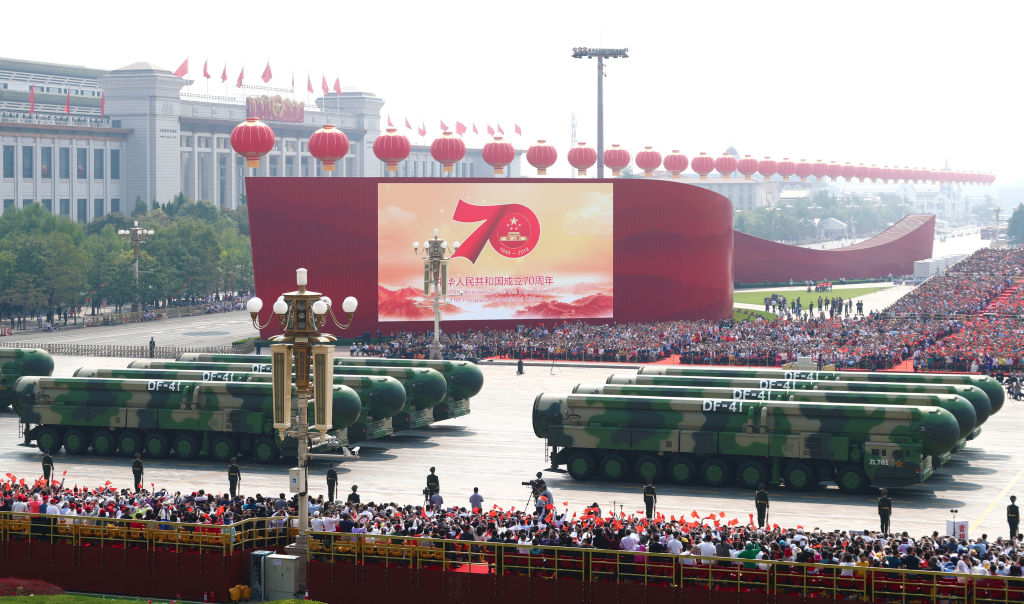Alarmingly, China has recently been pouring billions of dollars into the expansion of its nuclear arsenal. This includes not just more nuclear bombs and warheads, but also new missiles, transporters, silos, submarines, and bombers. We need to talk about what’s behind this buildup of China’s nuclear forces and what it means in terms of nuclear strategy and geopolitics.
For decades, China had been content with a relatively small nuclear force, based on a “no first use” strategy. But now, it seems that this policy is undergoing a major shift.
“This massive buildup of China’s nuclear forces begs the question: to what purpose? The numbers are way beyond the need for minimum deterrence. Moreover, the increased accuracy of Chinese nuclear delivery systems is more indicative of a first-strike capability. Is Beijing shifting to a first-use nuclear strategy?”
In the past, China’s arsenal was estimated to be around 160 nuclear warheads, placing it last among the declared “nuclear club” countries. However, China’s nuclear force has recently been growing at an alarming rate, with the U.S. Strategic Command reporting that China now has more ICBM launchers than the United States.
What used to be a modest nuclear policy of “dynamic minimum deterrence” has now transformed into a massive and worrisome nuclear buildup. China’s ICBM silos have increased from 100 in 2020 to 450 in late 2022, which means that Beijing could significantly expand its land-based nuclear force in the near future.
In addition to this, China is also catching up in terms of sea-based nuclear capabilities. They currently operate six Type-094 SSBNs, with new classes of SSBNs in development. Couple this with their stealth H-20 bomber and a large number of road-mobile missiles, and the Chinese nuclear buildup looks incredibly intimidating.
According to the U.S. Department of Defense, China will likely possess 1,000 nuclear warheads by 2030 and as many as 1,500 nuclear warheads by 2035. This would be roughly equal to the number of total active warheads possessed by both the United States and Russia.
So, why this massive buildup? The numbers go way beyond what’s needed for minimum deterrence. Is China shifting to a first-use nuclear strategy? We can’t say for sure, but what’s even more concerning is the possibility that Beijing itself doesn’t know what it wants to do with this burgeoning nuclear arsenal.
China’s aggressive national strategy, the “grand rejuvenation of the Chinese nation,” could potentially lead to impulsive use of nuclear weapons. In other words, Beijing might be building up its nuclear forces simply because it now has the financial means and technological capabilities to do so, and it sees nuclear weapons as just one more tool in its strategic competition with the United States.
This massive expansion of China’s nuclear forces is a serious cause for concern. We need to keep an eye on China’s nuclear strategy and its potential implications on global security.













